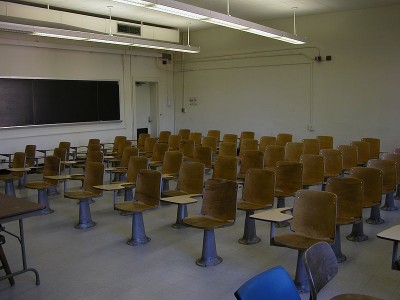In just its third day of producing a “Greater New York” section — meant to give The New York Times a run for its money — The Wall Street Journal saw it fit to feature an education story on the first page. The article, entitled “Teacher Absences Plague City Schools,” begins thus:
“One-fifth of New York City teachers missed work for more than two weeks last school year, with absenteeism most acute in some of the poorest districts, according to a Wall Street Journal analysis.
In Brownsville, for instance, 24.4% of teachers were absent more than the 10 sick days they are allotted each year, according to city Department of Education data. In the South Bronx, it was 22.1%. By contrast, in the district containing the more affluent Upper East Side schools, 13.2% of teachers were absent more than two weeks.”
Now, I’m all for the prominent placement of education stories, and so a part of me was happy to see The Wall Street Journal make this decision. But I do have serious reservations about the story itself, not least because it provided no national context. The reader does not learn, for instance, that the average American public school teacher is absent between nine and 10 days a year. This is important information that would make the article’s opening statistic — 20 percent of New York City teachers missing more than 10 days a year — seem much less dramatic.
Interestingly, my source on teacher absenteeism is the very same person The Wall Street Journal quotes: Raegen T. Miller of the Center for American Progress.
Miller, who TAed a class of mine when we were both grad students at Harvard some years ago, is just about the only academic who does research on teacher absenteeism. His 2006 dissertation, “The Causal Impact of Teacher Absence on Student Achievement,” is a precursor to his more recent work on the subject.
And here’s another place where The Wall Street Journal article could and should have been clearer — it reports that Miller “pointed to research that has found that every 10 absences lowers math achievement by the same amount as having a teacher with one- to two-years experience instead of a teacher with three- to five-years experience,” but it fails to note that Miller is citing himself here. Hmm.
Citing oneself is, of course, a time-honored tradition in academia — but it remains troubling nonetheless. Undergraduate students of mine have asked before whether they can cite themselves, and my response is always the same: “Not if you want me to believe you!”
Two other bones I have to pick with this particular Wall Street Journal article:
First, where’s the punctuation at the end of the fourth paragraph? In both the print and online editions, the period is strangely absent. Hmm. Looks like the paper could use a more attentive copyeditor.
Second, the article implies that teachers have it easy with regard to how many days they work compared to people in the “real” world. (Here’s the relevant paragraph: “Teachers, whose salaries range from $45,000 to $100,000, get 10 sick days a school year, three of which may be used for personal business. Last year, there were 184 school days. In most industries, employees work about 250 days a year.”)
Again, where’s the context? Most teachers spend significant time each summer in professional development or working a second job to make ends meet, and many teachers work every Saturday and Sunday between September and June. Those not in the teaching profession love to whine about how teachers have it so easy, with work-days ending at 3 pm and summers off, but they really haven’t a clue what they’re talking about. Don’t believe me? Read “The Myth of Having Summers Off” by Heather Wolpert-Gawron, or this piece in the Minneapolis Star Tribune. Or, better still, become a teacher and see for yourself just how “easy” the job is!




